Gaming desks on the market are often limited in size and features. Most display standard sizes and offer limited outlets and storage units.
Therefore, if you are tired of your gaming desk, building your own DIY gaming desk may be a reasonable solution.
You have a lot of desk designs to choose from, and since it is customized, you can add various features to it.
Building a DIY gaming desk is about choosing the design and size and furnishing desk frames from reclaimed wood or wood planks.
Then, wooden or metal frames for support and mounting are fitted, and outlets, extensions, or storage units are installed.
Moreover, making a DIY gaming desk can save you money and offer customized features.
Read on to learn how to build a basic gaming desk at home on a minimal budget.
4 Popular Gaming Desk Designs
Not all gaming desks are created the same.
The design and shape of gaming or PC desks vary to suit different room layouts and personal preferences.
In general, gaming desks are available in four different designs. These designs are as follows:
|
Desk Style
|
Features
|
Image
|
|---|---|---|
| Standard Desk | A straightforward desk design is usable while seated.
It is rectangular and comes in different dimensions. (For example; 50″ x 28-30″ x 25″) |
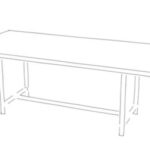 |
| Standing Desk | It follows a straightforward design but is intended for standing instead of sitting.
It may come in different dimensions, similar to standard desks. |
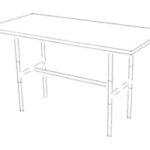 |
| L-Shaped Desk | L-shaped desks are ideal for utilizing empty corners in a room.
They come in different sizes and offer an extended work surface for various purposes. (60-72″ for the longer side and 48-58″ for the shorter side) |
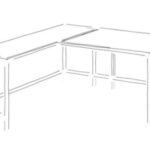 |
| U-Shaped Desk | The desk provides a significant work surface and surrounds the user on three sides in an L-shape.
However, it may need more floor space due to its larger dimensions. |
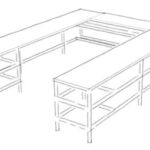 |
It is more practical to create standard, standing, and L-shaped desks through DIY projects.
Most gamers prefer L-shaped gaming desks for their larger work surface.
Moreover, designing and assembling them is relatively easy with the right tools and materials.
Further, for a DIY gaming desk project, it is best to avoid creating a U-shaped desk due to its complexity and cost.
Why Should You Design A DIY Gaming Desk?
Designing a gaming desk for DIY enthusiasts may seem like a daunting and time-consuming task, but the benefits outweigh the effort.
When using the DIY approach, you have the flexibility to choose the materials, features, storage options, and budget that best fit your needs.

Do not worry, you can be certain that you are not alone.
Many home users attempt to build their own gaming desks, and even manage to create a functional unit.
Here are a few advantages to creating a custom gaming desk.
- They can be customized and expanded to fit your desired size, layout, and features.
- It showcases your innovative ideas and dedicated efforts through a practical gaming desk.
- Assembling a custom gaming desk that fits nooks and corners makes better use of space than market-bought, less reliable desks.
- It incorporates repurposed wood to create a new gaming desk unit that fits your budget.
- Building something yourself provides a sense of accomplishment and opens up opportunities to learn.
How To Build A DIY Gaming Desk: Step-by-Step Guide
When you decide to build a custom gaming desk, there are various factors that you need to take into consideration.
When selecting a gaming desk, consider the right tools and materials to provide optimal support.
Further, it provides proper structure based on your preferred shape and size.
Here is a comprehensive guide that will help you set up a fully functional gaming desk:
Materials Required To Build A DIY Gaming Desk
Below is a list of tools that you will need to build a custom gaming desk.
| Category | Items |
|---|---|
| Measurement | Measuring tape, circular, table, or miter saw, and spirit level |
| Power tools | Drill and screwdriver |
| Others | Pencil and paper, 80-120-grit sandpaper, wood glue, table clamps, paint, stain, lacquer, or varnish, leather desk mat, bolts, and hex key |
Step 1: Choose The Desk Surface
Let’s start by identifying the desk surface, as it occupies a significant portion of a gaming desk.
Choosing the right desk surface material can affect the overall cost of your DIY project.
You can opt for different sturdy materials for what is commonly referred to as a tabletop.
- When making DIY crafts, reclaimed or repurposed wood, such as old pallets, wood planks, or furniture, are great materials to use for desk surfaces.
- You can buy custom desk surfaces made from MDF wood, glass, plastic, or steel from Amazon or IKEA.
- When using the glass, make sure to use tempered glass with high tensile strength to support the weight of your PC and peripherals.
- Plastic and steel surfaces for desks are also a good option that can be cost-effective compared to wood.
However, having previous crafting skills is necessary to minimize mistakes when measuring and cutting through materials.
Here is a video description to assist you in building a custom desk surface.
Step 2: Figure Out The Gaming Desk Size
Deciding on the size of the gaming desk is the second and most crucial step to take.
You should be cautious about relying on size alone to determine the required materials for building your desk.
Begin by measuring the size of your gaming desk; the more space it has, the more items it can accommodate.
The standard desk height is between 29″ and 30″, but your height will determine the right size.
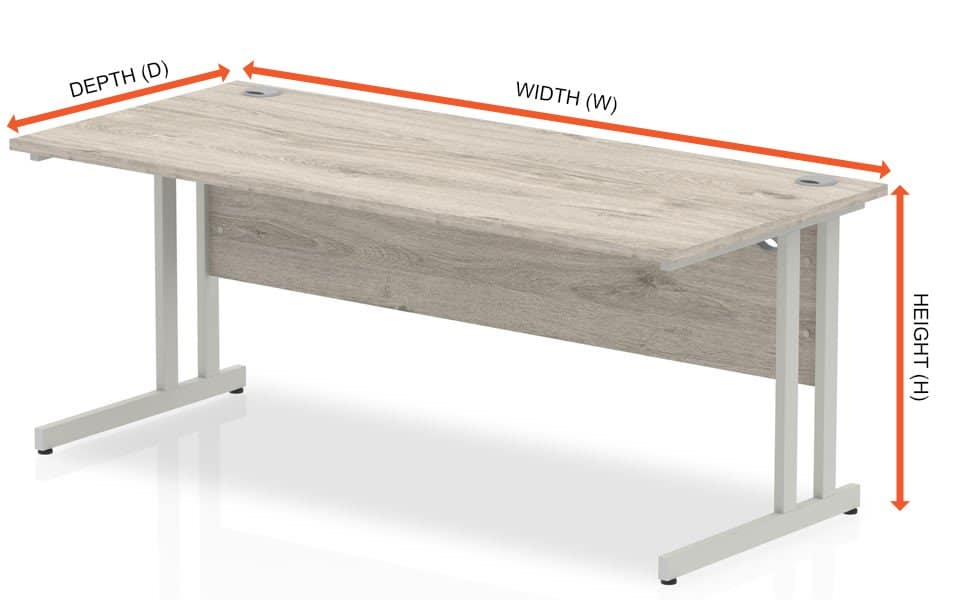
A desk height of 28″ (71.2 cm) will allow users between 172 cm and 177 cm to sit comfortably.
On the other hand, a standing desk height should optimally measure 35″ – 36″ to maintain straight body stature.
Tip: Use a desk height calculator to find your custom desk height.
Similarly, take into consideration the size of your desk, specifically its depth and length.
A single desk measuring 20″ x 30″ may be insufficient for multi-monitor setups.
For a large desk surface, choose dimensions ranging from 20″ x 36″ to 25″ x 55″.
On the large side, an L-shaped gaming desk should have an average dimension of 23″ x 60″, while the small side should have 23″ x 36″.
Moreover, the surface should be around 1″ to 1 ¾” to endure heavy gaming equipment and other items.
Step 3: Choose The Right Parts And Tools For The Desk Frame
After you have made a decision on the desk surface and dimensions, proceed to build the desk frame.
When building a desk frame, start by selecting the appropriate wood or metal tubes to support the weight of the desk.
If you are looking to select metal tubes, it is important to choose ones that have a high tensile strength capability.
For steel frames, choose anything over 300 kg/cm2 that can withstand the weight of a gaming PC and its peripherals.
Metal tubes are superior to wood for creating flexible and sturdy frame designs. Using a socket and outlet tee, you can bend them into custom shapes.
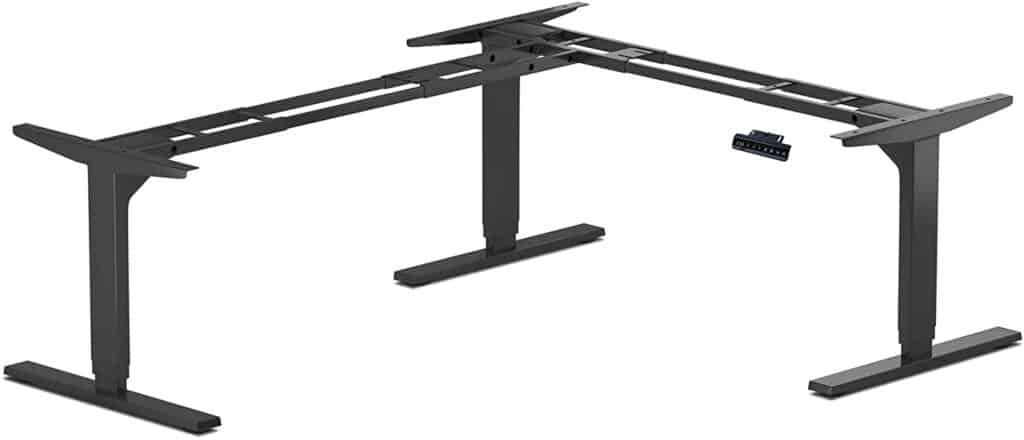
When designing a steel desk frame, consider the following factors.
| Material | Specification |
|---|---|
| Tube 1000 mm (galv-ube-size7) | At least 4 to create a vertical frame |
| Tube 995 mm (galv-ube-size7) | At least one 2-3 to create a horizontal frame |
| Single socket tee | At least 4 to hold the vertical frame |
| 90° Side Outlet Tee | At least 4 to hold adjoining frames |
| 90° Elbow | At least 2-3 to bend the frames |
| Flange and panel Holder | Optional |
Optionally, you can buy quality desk legs, such as IKEA’s OLOV legs, at $10 a piece.
It would be sufficient to construct a sturdy and adaptable desk frame.
However, you can always make a dynamic structure, such as a monitor mount, by adding more metal tubes, sockets, or outlet tee.
Step 4: Assemble The Desk
To begin, prepare the surface by cutting, sanding, staining, and finishing wood surfaces. This will ensure a smooth and polished surface.
This process can be completed quickly by those with furniture-making experience but may take a few hours otherwise.
- Smooth the rough edges by sanding back and forth across the surface.
- To complete, apply two coats of either varnish or lacquer.
Here is a video guide to help you with it.
- For a colorful touch, consider painting the desk surface with two layers of base and top paint to create a thicker consistency.
- Next, cut tubes for the appropriate frame height and assemble or order precut tubes.
- The height of the tube should be 28-29 inches for sitting desks and 34-35 inches for standing desks.
- Drill a 1 ½ or 2-inch diameter hole for the wire outlet and fix the top frame to the desktop using an insert and bolt.
- Attach each tube using a single socket tee and a 90° side outlet tee to create a frame structure. Add a flange at the bottom of the frame for base support.
To create a comfortable compartment for your CPU, consider building one under your desk using tubes.
Step 5: Add Extra Features
A gaming desk would look incomplete without additional features such as drawers and mounts.
When using metal tubes as the desk frame, you can purchase additional cut tubes, socket tees, outlet tees, and flanges to create an under-desk drawer.
Use the space to add a CPU or detachable drawers that you can easily buy on Amazon.
The final product will look something like this:
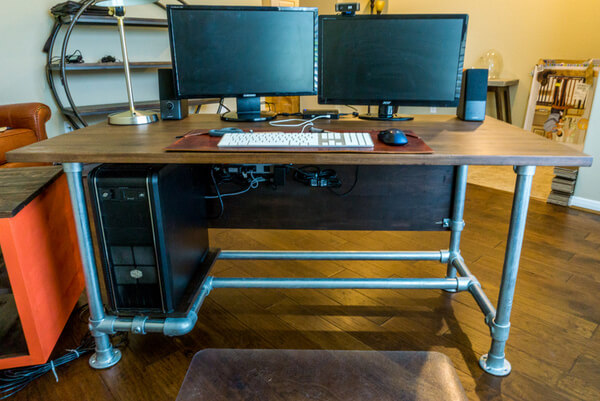
Great job! You have successfully designed a basic DIY gaming desk.
Remember to add additional gaming desk accessories, such as RGB lighting stripes, a leather mousepad, and a desk lamp.
How Much Does It Cost To Build A DIY Gaming Desk?
Building a DIY gaming desk can cost between $200 to $300, depending on the desk’s size and the materials used.
Remember, you don’t have to pay anything if you use reclaimed wood unless you buy it from someone else.
On the other hand, a finished wood table top on Amazon and Walmart would cost about $48-$104.
The additional sanding, staining, and finishing cost about $3.36 to $7.46 per linear foot (professional’s rate).
Using IKEA’s OLOV legs will cost $60 for four frame tubes. The flange, side outlet tee, and single socket tee cost about $1-$7 a piece.
If you want to create additional support, such as monitor mount stands, be prepared to pay more for custom frame tubes, inserts, bolts, side outlets, and single socket tees.
Otherwise, choose prebuilt mounts like a VIVO dual monitor desk charger for about $39 on Amazon.
Characteristics Of An Ideal DIY Gaming Desk
To ensure that you create the perfect gaming desk, it’s important to keep in mind certain aspects.
Create a checklist of these items to ensure that your gaming desk is ergonomic.
1. Keep It Large
When building a DIY gaming desk, opt for a larger size to overcome limited desk space.
A desk with a 30″ depth and a width between 45″ and 55″ is suitable for gaming.
2. Affordable Project
The DIY gaming desk project is more cost-effective than buying a pre-made gaming desk.
Building your gaming desk would cost $80 to $200 less than buying a new one.
It is important to keep the material to a minimum and simplify assembly to save costs.
3. Easy To Assemble
To save time, opt for simpler arrangements that allow you to put all the items together quickly.
If you are unable to perform a task, you may consider hiring a professional who charges between $5 to $30 per hour.
4. Ergonomic Product
The last thing to consider in the DIY gaming desk project is the ergonomics aspect.
When gaming for countless hours, prioritize comfort over style for your desk.
A gaming desk with an appropriate height and a larger surface area is a better choice.
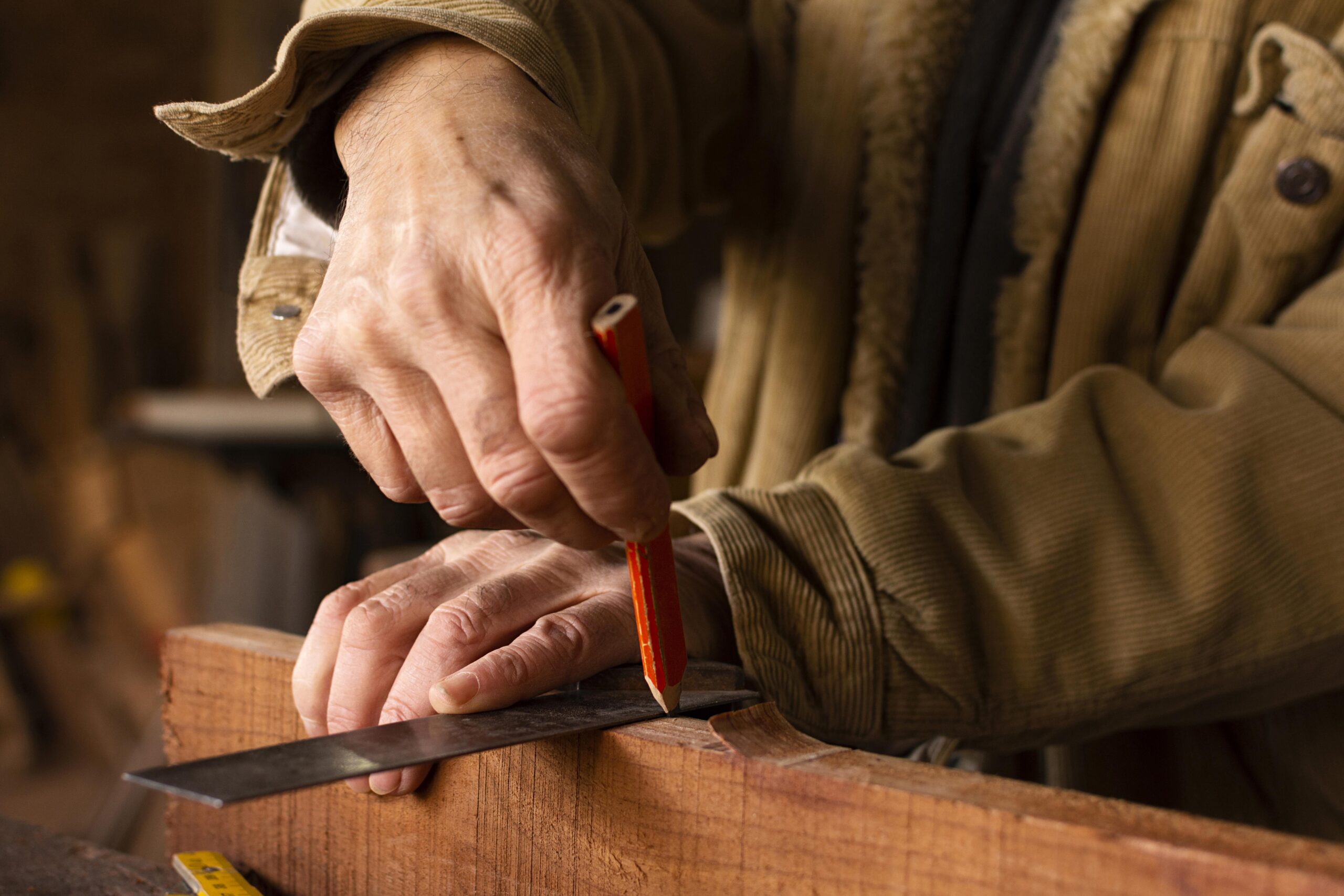
Creating their own gaming desk can be a fun challenge for many people.
You will find many desk craft videos on YouTube that you can refer to when starting a DIY gaming desk project.
However, to create a perfect gaming desk, keep the cost minimal and never compromise on functionality and comfort over style.
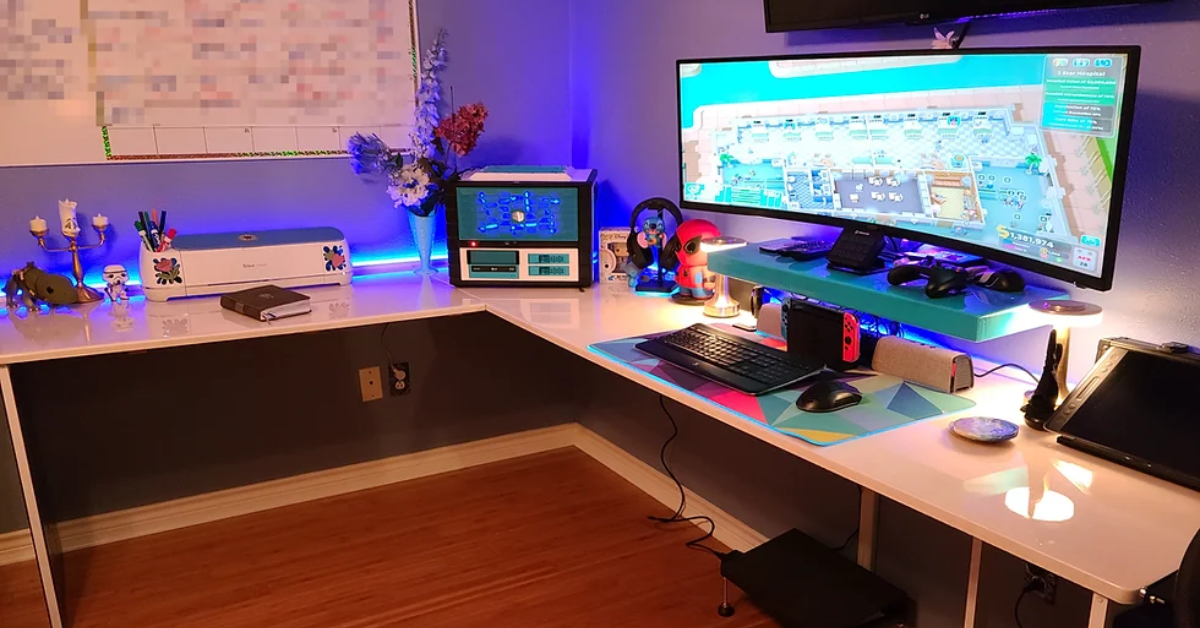
Leave a Reply